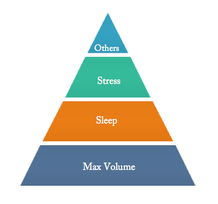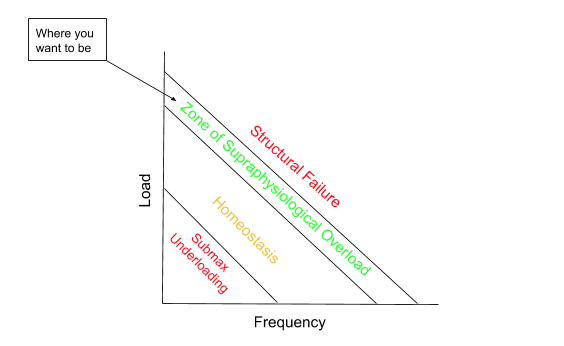Sick of Training Injuries?
Mar 22, 2018
Here at Athletes’ Potential, we’ve had the opportunity to work one-on-one for an hour with over 1,200 people. We’ve worked with people with all kinds of different training backgrounds and by doing so we started noticing some trends. Common weaknesses and movement deficiencies that were not only creating injuries, but hindering performance and preventing people from living an active lifestyle.
So our team of doctors and strength coaches set out to create a solution to this problem and this article highlights that solution as well as some of the problems we kept seeing that were creating injuries, decreasing performance, and preventing people from living a healthy lifestyle.
Problem #1: Lack of Training Variability
Whether your training modality is CrossFit, running, powerlifting, olympic lifting, triathlons, dancing, or any of the other infinite training options out there, there are biases in your programming that cause you to perform some movements all the time and others hardly at all. If we never leave our comfort zone with our training, there’s going to be simple movements that we miss, which overtime can lead to aches and pains and even injury.
Let’s take CrossFit for example. Now obviously we love CrossFit at Athletes’ Potential, all of our physiotherapists are CrossFit coaches themselves, but even for a training program who boasts they “employ a constantly varied approach to training, functional movements, and loads” there are still biases. Tell me...when’s the last time you gripped the bar with a supinated grip (your palms turned up) during a workout? The answer is almost never. Deadlifts, cleans, snatches, pull-ups, toes-to-bar, jerks, dips, rows, etc...all these movements have you in a pronated (palms tuned down) grip. This creates a huge movement bias, and is one of the main reasons I see patients with elbow pain in the clinic.
Try this: Next time you’re in the gym hang on a pull-up bar with your palms down and then with your palms up. You’ll be shocked at how different this feels on your wrists, elbows, and shoulders.
Problem #2: Training Volume

This graph dramatically oversimplifies the concept of training volume, but essentially training volume is based on two primary variables: load and frequency. As you can see, there is a sweet spot you want to hit called the “Zone of Supraphysiological Overload.” This is where the magic happens, meaning it’s where you get stronger, leaner, healthier, more resilient. However, more often than not I’m seeing people in the red highlighted areas, especially in the zone of structural failure. This is essentially where you get an overuse injury such as biceps tendinopathy, nagging low back pain, or vague knee pain. However, doing nothing is just as bad as doing too much. That’s even true in the medical community, which is why if your healthcare provider is telling your to just rest for a weeks as a way to treat your low back pain, you need to give us a call.
Check this out though, one of the best ways to ensure that your not overloading your muscles and joints at a frequency that is too high is training variability (see above). Training volume and training variability go hand in hand and varying up your training is a great way to prevent tissue failure.
Problem #3: Poor Mobility
What that graph on training volume above failed to mention, is that if you’re moving with poor mobility, your going to fly through those zones until you hit tissue failure. This can’t be overstated. If you’re only deadlifting once a week but your deadlift looks like crap because you lack the requisite hip mobility to pull weight from the floor, you’re tissues will fail faster and you will eventually have an injury.
Looking at people's programming, almost nobody is spending an adequate amount of time focused on improving the mobility. Which is a problem. Being able to move through a full range of motion is crucial for not just training, but for being able to get through life’s demands. Think of your body as a Ferrari, lifting with poor mechanics due to limited mobility is like driving that Ferrari with low motor oil and with the hand brake hand. Sure it’ll still drive, but you’re leaving performance on the table, and eventually it’s going to break down.
The Solution:
Training variability, volume, and mobility are all related and after countlessly having the same conversation with the people we see in the clinic we decided enough was enough. We decided to create a solution that would benefit damn near everyone, and that solution is the Athletes’ Potential Pain-Free Training Plan. Whether your goal is to prevent injuries at CrossFit, improve your running times, or simply become a healthier version of yourself; we’ve created a unique program that requires minimal equipment and minimal time help you reach your goals.
There is simply nothing on the market like this program. It has been developed from the ground up by new-age healthcare professionals who blend the fields of rehabilitation and human performance and we couldn’t be more excited to offer this service to you.
You only get one body, so if you’re ready to stop beating it up, click the link above or fill out a contact request form. We’d love to answer any of your questions. Until then, happy training!
-Dr. Jake, PT, DPT
Let us help you figure out to live your best active life today!
Remember, Movement is Medicine!

